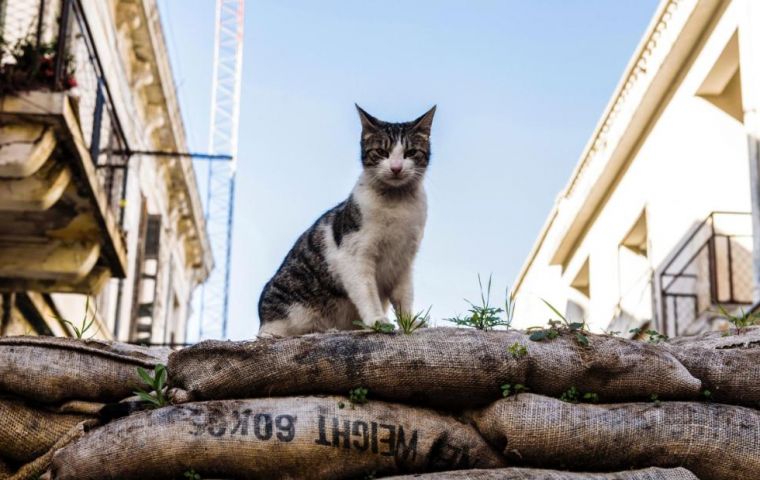MercoPress. South Atlantic News Agency
Australia plans to cull two million feral cats to save native wildlife
 Feral cats currently directly threaten the survival of more than 100 species, including the bilby, bandicoot, bettong and numbat, Australian estimates
Feral cats currently directly threaten the survival of more than 100 species, including the bilby, bandicoot, bettong and numbat, Australian estimates Australia's federal government is once again in the spotlight for a years-old plan to cull 2 million feral cats by 2020, this time after details emerged about the reported use of poison-laced sausages to reduce the island's wild cat population.
Modern feral cats are the same species as domesticated house cats, but they hunt and survive in the wild without human contact. Scientists have linked the large cat population's predatory behaviors with the decline and, in some cases, the extinction of more than two dozen of Australia's native species.
The country's Department of the Environment and Energy in 2015 unveiled its threatened species strategy, which included four main pillars: reducing the feral cat population, establishing safe havens for at-risk species, improving habitats and carrying out emergency interventions for species facing extinction.
European colonizers are believed to have first brought cats to the island in the 17th century, and feral colonies had developed around the country by the end of the 19th century. Feral cat populations have since grown exponentially, and the cats are now found in all but one of the country's ecological regions, according to government data.
Feral cats currently directly threaten the survival of more than 100 species, including the bilby, bandicoot, bettong and numbat, the Australian government estimates. The population has grown so large that that feral cats kill 316 million birds and 596 million reptiles across the country each year, the Australian Wildlife Conservancy estimates.
That plan would be considered a success if the government could document that it culled 2 million feral cats by 2020, among other benchmarks. The government laid out a series of methods to carry out the cull like developing and deploying a lethal cat bait, trapping feral cats, and establishing feral cat-free areas, among others.
It has predictably proven controversial -- some scientists dispute the science behind the cull while animal-rights advocates worry that the cull could inadvertently kill pet cats -- but the government has stood firm in its stance that the cull will ultimately be beneficial to the country's ecology.
“Australia has drawn a line in the sand on the loss of native wildlife. The Australian public and conservation community supports our approach; we cannot tolerate the damage feral cats are doing to our wildlife anymore,” Gregory Andrews, the country's threatened species commissioner, wrote in October 2015 in response to criticism of the cull.




Top Comments
Disclaimer & comment rules-

Read all commentsIs Australia an island?
May 04th, 2019 - 11:20 pm 0Hmmm
Commenting for this story is now closed.
If you have a Facebook account, become a fan and comment on our Facebook Page!